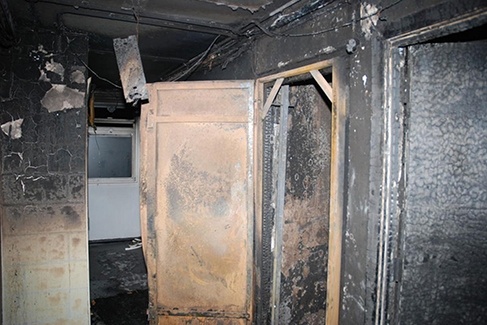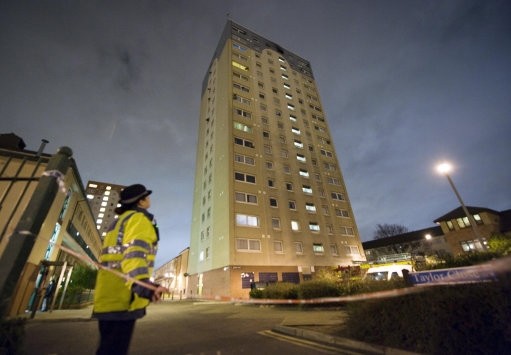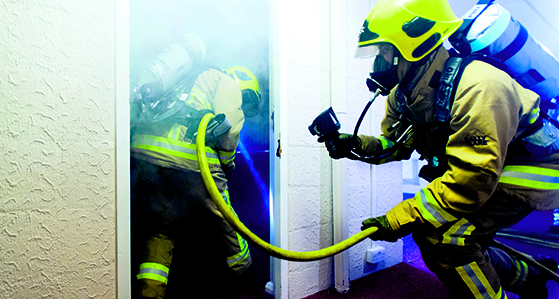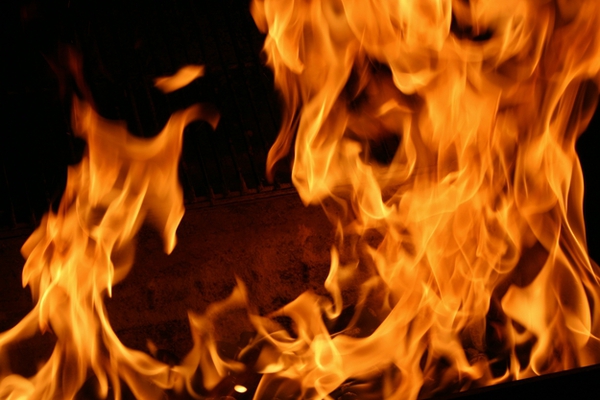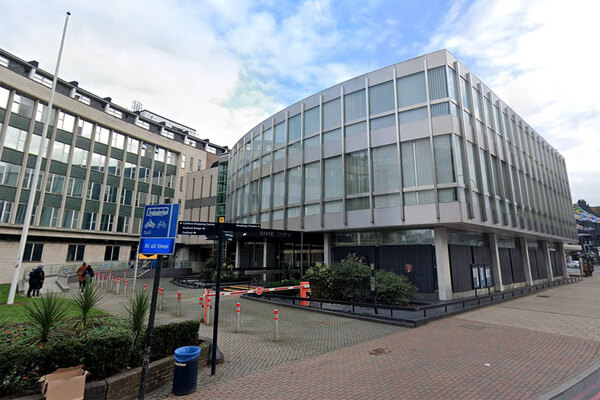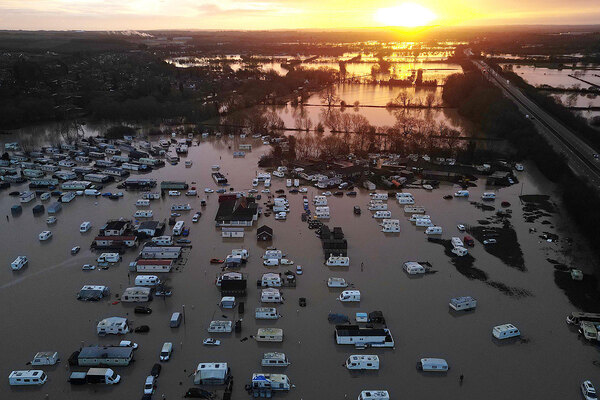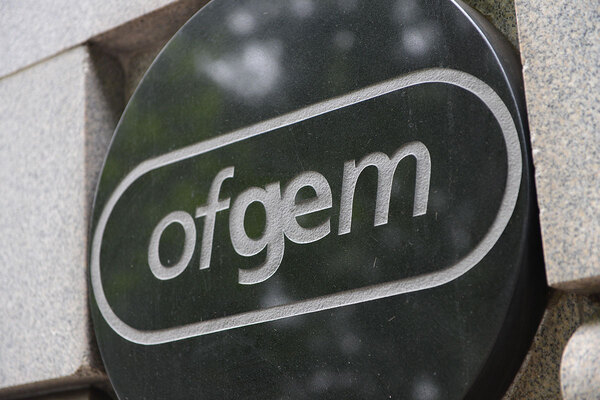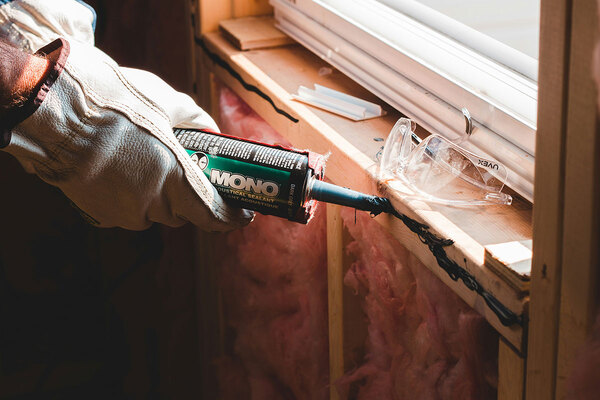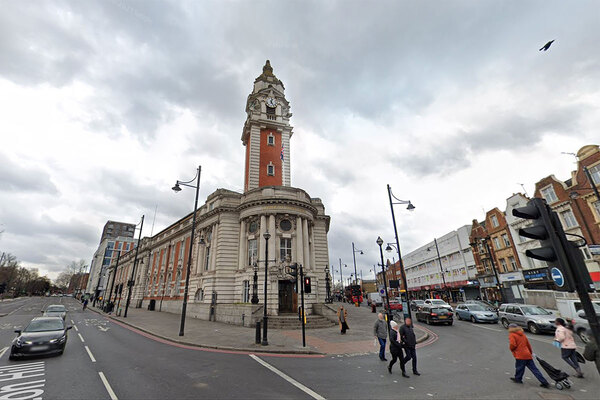You are viewing 1 of your 1 free articles
The full story of the Marine Tower fire
Five years ago, two women died after a fire spread from another flat in the tower block they were in. In January, a social landlord was fined for failing to carry out a regular risk assessment in the building before the blaze. Now, Sophie Barnes tells the full story for the first time and reveals the key learning for other landlords…
Video:
features code

Source: Press Association
It was a cold, January afternoon at Woolwich Crown Court. Five managers from Lewisham Homes sat nervously in the courtroom, awaiting the outcome of a case that had dragged on for five years. The mood was sombre. The organisation was about to undergo sentencing - which would draw the last line under the tragic Marine Tower fire, that tore through the 16th floor of the tower block in 2011 claiming the lives of two women.
Sandra Clarke started the fire in her flat on 4 February 2011, and then quickly left, allowing the smoke and flames to billow into the hallway. Witnesses said they heard the screams of the two terrified women as they realised they were trapped by the flames. This was the sound of the last moments in the life of Ms Clarke’s next-door neighbour, Kunaliny Alagaratnam and her cousin, Santhirapathy Tharmalingam.

The victims, Santhirapathy Tharmalingam and Kunaliny Alagaratnam
Despite 17 fire engines, 13 support vehicles and 130 firefighters turning up at the scene, it was too late for the two victims. Once they were carried out by firefighters they were pronounced dead at the scene, in Deptford, south-east London. Ms Clarke is now serving a 16-year sentence for two counts of manslaughter.
“[It was a] thoroughly dangerous situation which had in fact existed for some time.”
Judge Justice Christopher Hehir
But the court was about to hear how failures by the landlord, Lewisham Homes, played a role in this tragic incident. Immediately after the blaze, the arm’s-length management organisation (ALMO) was issued with an enforcement notice over fire safety at the block, and the London Fire Brigade brought a prosecution against it, with two counts of failing to properly maintain fire doors and failing to review an existing fire risk assessment, which was carried out three years before the fire.
As a result of legal proceedings, for the last five years Inside Housing has been unable to report the full details of the case. Now, we can reveal for the first time the fire safety breaches at Marine Tower, and the actions Lewisham Homes has taken to overhaul its fire safety procedures. And we can start to unpick the lessons for the sector to ensure such an incident never happens again.
Video:
Ad slot
Lewisham Homes pleaded guilty to the charges. Fining the ALMO £40,000 and £23,407 in costs, Judge Justice Christopher Hehir said it was a “serious failure” on Lewisham Homes’ part that it did not carry out annual fire risk assessments and make sure fire doors were fit for purpose, and this resulted in a “thoroughly dangerous situation which had in fact existed for some time”.
Justice Hehir was keen to stress the ALMO would have faced a far heftier fine had it been a profit-making organisation, but the “public good” it provides meant it would not be fair to hit it with a huge fine.
The ALMO’s lawyer said the tragic incident had served as a “wake-up call” for Lewisham Homes, staff were “shocked and horrified by what happened” and feel “great regret” about the deaths of the two women.
Fire doors failure
So what went wrong? The hearing revealed that failures in the fire doors were crucial in the spread of the fire.
In the Alagaratnams’ case, they couldn’t close their front door because the metal security grill was broken and blocking the inner door. In contrast, two other neighbours - whose flat had a self-locking fire door - escaped unharmed.
Once the smoke and flames passed out into the hallway, the fire spread quickly through the open door of the Alagaratnams’ flat.
At the hearing, the court heard the metal frame on the Alagaratnams’ flat door did not fit tightly to the wall and there was a gap of 25mm around all three edges which would have allowed heat and smoke through even if it was closed.
So what has Lewisham Homes done to address this problem? Steve Kilden previously worked at the London Fire Brigade. He was brought in as fire safety manager by Lewisham Homes following the fire to head a fire safety team. He explains that the problems with the flat doors was immediately identified, and “one of the key aspects for us to look at was to replace them”.
The team also made sure any security grills fitted on the front doors did not stop the doors from closing securely.
The court heard that the problem with the doors would have been spotted during a fire risk assessment, had it been carried out. An investigation by the fire brigade following the fire found Lewisham Homes, which manages 12,475 properties, had failed to carry out fire assessments in all its properties for the past two years, and fire door provision was “patchy”.
But why didn’t the ALMO carry out these assessments? In court, Lewisham Homes’ lawyer said there was a delay because the company contracted to complete the work, Connaught, went bust in 2010. Before it shut up shop, the contractor had carried out 14,000 assessments of Lewisham Homes’ properties but had many more to complete and review. The flat on the 16th floor of Marine Tower was one of these.
In the aftermath of the fire, Lewisham Homes knew it must reassess its process for fire risk assessments, and ensure it was up to scratch. Dominic Johnson, head of health and safety at the ALMO, says a priority for the organisation was to bring in specialist staff from the London Fire Brigade who could oversee the fire risk assessment process and make sure it was fit for purpose. Following the fire, risk assessments and reviews were carried out “more or less immediately”, Mr Johnson explains.

Sandra Clarke is serving a 16 year prison sentence for manslaughter after starting the fire
He says there is an ongoing concern, accepted by the London Fire Brigade, over the quality of work fire risk assessors carry out. This is a concern that arose following the Lakanal House fire in south London in 2009, which killed three women and three young children..
Mr Johnson says: “Since the Lakanal enquiry it’s been an area that’s been generally accepted - how do we demonstrate the competency of our fire assessor? Is there an industry standard? This is something lots of housing providers are challenged by and the London Fire Brigade themselves have accepted that the quality of some fire risk assessments don’t really stand up to scrutiny.”
Lewisham Homes reassured itself on this point by asking its new specialist staff to monitor the fire risk assessment process.
Mr Johnson’s team now oversees the fire risk assessments and reports any problems spotted by an assessment back to the management team and the board.
Safety improvements
In all, Lewisham Homes has spent at least £13m to improve fire safety standards since the fire.
“Obviously we’ve learned a lot and from a strategic level we’ve been extremely proactive. We’ve seen this is a major risk for us as an organisation that we’ve addressed.”
Dominic Johnson, head of health and safety, Lewisham Homes
As well as carrying out regular reviews of risk assessments and recruiting specialist fire safety staff from the London Fire Brigade, the new safety standards include installing emergency lighting in hallways, and setting up hard wired fire detection systems, which are felt to be the best option because the batteries don’t run out.
Lewisham Homes has also paid for the maintenance of fire safety equipment such as fire extinguishers to make sure it is ready to use.
When the fire broke out, the caretaker at Marine Tower tried to run upstairs to warn the tenants but was pushed back by the smoke and heat. In the courtroom the prosecution lawyer pointed out that although the caretaker had the right intention, his attempt to get nearer to the fire showed he hadn’t received the correct training, which would not recommend anyone putting themselves in danger.
Caretakers now do monthly checks of all the tower blocks which are documented and audited. The fire safety team has also retrofitted fixed and portable sprinklers in all its sheltered accommodation. They have assessed all residents thought to be vulnerable and fitted their properties with suppression units.
Mr Kilden says when tenants move in they are given fire safety information, which includes advising them not to tamper with the self-closing device on the doors.
Since the fire, Mr Johnson says the ALMO has made progress and he thinks they are now a sector leader.
He says: “I go to a lot of meetings with other ALMOs and councils, and we’re so far ahead in that lots of discussions they’re having we had two or three years ago and have actioned. Obviously we’ve learned a lot and from a strategic level we’ve been extremely proactive. We’ve seen this is a major risk for us as an organisation that we’ve addressed.”
Lewisham Homes may have learned its lesson, but what about the rest of the sector?
Mr Kilden says he has been approached by several housing associations asking for advice on fire safety measures.
The tragic events of 4 February 2011 have forced all social landlords to take a long hard look at their fire safety practices.
What this means for high-rise safety is still contentious. Justice Hehir said a high-rise block of flats “can quickly become a death trap when a fire breaks out”, but the London Fire Brigade was at pains to point out tower blocks are no more dangerous than houses.
Instead, Neil Orbell, assistant commissioner for fire safety, says the Marine Tower fire is a “stark reminder” of the “potentially lethal” consequences of failing to maintain fire safety procedures.
As the government looks at increasing the density of council estates as one of the solutions to the housing shortage, often resulting in more tower blocks, social landlords will need to remain vigilant to ensure tenants are safe and blocks are fireproof.
Timeline of the Marine Tower fire
4 February 2011
Sandra Clarke, a tenant in Marine Tower, deliberately started a fire in her flat on the same day she was due to attend court for rent arrears
4 February 2011
Investigation begins, but is stopped after police decide to designate the area as a crime scene
5 February 2011
The investigation is concluded
15 February 2011
Lewisham Homes served an enforcement notice for “inadequate maintenance of the fire door to flats including some without self-closing devices and Flat 61 where the addition of a metal door meant the existing fire door was
unable to fulfil its intended role”
6 September 2011
Enforcement notice had been fully complied with
7 October 2015
London Fire Brigade decides to prosecute Lewisham Homes
23 December 2015
Case heard at Bromley Magistrates’ Court
29 January 2016
Sentencing at Woolwich Crown Court
